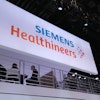Dear Molecular Imaging Insider,
This edition's Insider Exclusive features a new PET imaging agent radiolabeled with the positron-emitting isotope gallium-68. The agent is showing early success in detecting stem cell-like cancer cells in patients with breast cancer.
If the so-called "radiolabeled hedgehog" can function with PET to image certain cancer cells, researchers believe early detection may lead to aggressive treatments to minimize tumor recurrence, improve therapeutic outcome, and aid the evaluation of new stem-cell targeted cancer therapies.
You can get an exclusive look at the pilot study from research institute RadioMedix and M. D. Anderson Cancer Center, both in Houston, by clicking here.
Also in this issue of the Insider, associate editor Cynthia E. Keen reports from the Society for Pediatric Radiology meeting, where researchers presented a study indicating that skeletal scintigraphy with F-18 sodium fluoride is a safe and effective way to diagnose skeletal disorders in children and could be used instead of bone SPECT exams.
In addition, Canadian researchers are having early success in developing a new type of cyclotron that can produce technetium-99m. The goal is to provide another source for the much-needed medical isotope and help alleviate the shortage in North America. So far, early diagnostic tests have found the cyclotron-produced technetium to be equivalent to the medical isotopes derived from nuclear reactors.
The new cyclotron would have been helpful in recent weeks, as the volcanic eruption in Iceland disrupted air travel and the delivery of molybdenum-99 (Mo-99) to Covidien's U.S. technetium-99m generator production facility. Read how the Dublin, Ireland-based healthcare technology firm explored "all possible transportation options" to ensure delivery of as much Mo-99 as possible for generator production in the Americas.
And, associate editor Kate Madden Yee details digital mammography tomosynthesis and what happens when you add molecular-based functional tomosynthesis capability to it. University of Virginia researchers did just that and reported their findings in the April issue of Radiology.
Don't forget that this year's SNM annual meeting is set for June 5-9. If you can't make it to Salt Lake City, follow the daily events, news, and research presentations by visiting the Molecular Imaging Digital Community throughout the conference.




















